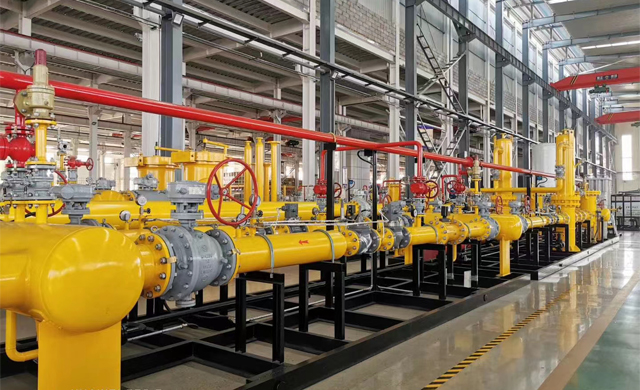
Dec . 17, 2024 19:36
Back to list
Understanding the Importance and Functionality of Relief Valves in Industrial Applications
Understanding Relief Valves Essential Components for Safety and Efficiency
Relief valves play a crucial role in maintaining safety and efficiency across various industrial applications. These devices are designed to prevent the excessive buildup of pressure in systems by automatically releasing pressure when it reaches a predetermined limit. Understanding their function, types, and applications is essential for anyone involved in industries such as manufacturing, oil and gas, food processing, and beyond.
The Function of Relief Valves
At their core, relief valves serve a protective purpose. Any sealed container or pipeline can become a potential hazard if too much pressure accumulates. For instance, steam boilers, hydraulic systems, and gas pipelines all operate under pressure to function effectively. However, if this pressure exceeds safe limits due to thermal expansion, equipment failure, or obstructed flow, the results can be catastrophic, potentially leading to explosions and serious injuries.
To mitigate these risks, relief valves are engineered to open automatically at a set pressure threshold, allowing excess pressure to escape. This alleviates the stress on the system, protecting both the equipment and personnel from potential danger. Once the pressure drops to a safe level, the valve closes, ensuring that the system can return to normal operation.
Types of Relief Valves
Relief valves come in several varieties, each designed for specific applications. The most common types include
1. Spring-Loaded Relief Valves These are the most widely used type of relief valve. They operate using a spring mechanism that holds the valve closed until the internal pressure overcomes the spring force. When this happens, the valve opens, releasing excess pressure. Spring-loaded relief valves are often used in steam and gas applications.
2. Pilot-Operated Relief Valves These valves use a smaller pilot valve to control the larger main valve. They are typically used in high-pressure applications and are known for their sensitivity and precise control. Pilot-operated valves can also handle a more significant flow rate than spring-loaded valves, making them suitable for larger systems.
3. Pressure Relief Valves (PRVs) These valves are specifically designed to protect various systems from overpressure scenarios. They can be used in both gas and liquid applications, making them versatile for different industries.
relief valves

4. Vacuum Relief Valves While pressure relief valves deal with excess pressure, vacuum relief valves manage negative pressure scenarios. They allow air into containers to prevent the formation of a vacuum when contents are withdrawn or in the case of thermal contraction.
Applications of Relief Valves
Relief valves are incorporated into a wide range of industries and applications
- Oil and Gas In oil refineries and gas processing plants, relief valves protect equipment by managing pressure fluctuations caused by temperature changes or process upsets.
- Chemical Manufacturing These valves ensure that reactors operate within safe ranges, preventing chemical reactions from escalating due to excessive pressure.
- Water and Wastewater Treatment Relief valves protect pumps and piping systems from pressures that could lead to leaks or ruptures, ensuring the integrity of water supply systems.
- Food Processing In the food industry, maintaining the right pressure in cooking and storage processes is vital for food safety and quality. Relief valves are integral to these systems to prevent over-pressure scenarios.
Maintenance and Compliance
While relief valves are designed to be reliable and effective, regular maintenance and inspection are critical to ensuring they function correctly. Industry regulations often dictate the maintenance schedules and testing procedures for these devices. Operators must ensure that relief valves are not only installed correctly but are also regularly tested for performance to comply with safety standards.
In conclusion, relief valves are unsung heroes in the realm of industrial safety. They provide essential protection against potentially dangerous pressure buildups, ensuring that systems operate smoothly and safely. Understanding the types and functions of relief valves, as well as their applications in various industries, is fundamental for anyone involved in maintaining safe and efficient operations. Proper maintenance and adherence to regulations will further enhance the effectiveness of these critical safety devices, safeguarding both people and processes.
Latest news
-
Safety Valve Spring-Loaded Design Overpressure ProtectionNewsJul.25,2025
-
Precision Voltage Regulator AC5 Accuracy Grade PerformanceNewsJul.25,2025
-
Natural Gas Pressure Regulating Skid Industrial Pipeline ApplicationsNewsJul.25,2025
-
Natural Gas Filter Stainless Steel Mesh Element DesignNewsJul.25,2025
-
Gas Pressure Regulator Valve Direct-Acting Spring-Loaded DesignNewsJul.25,2025
-
Decompression Equipment Multi-Stage Heat Exchange System DesignNewsJul.25,2025

